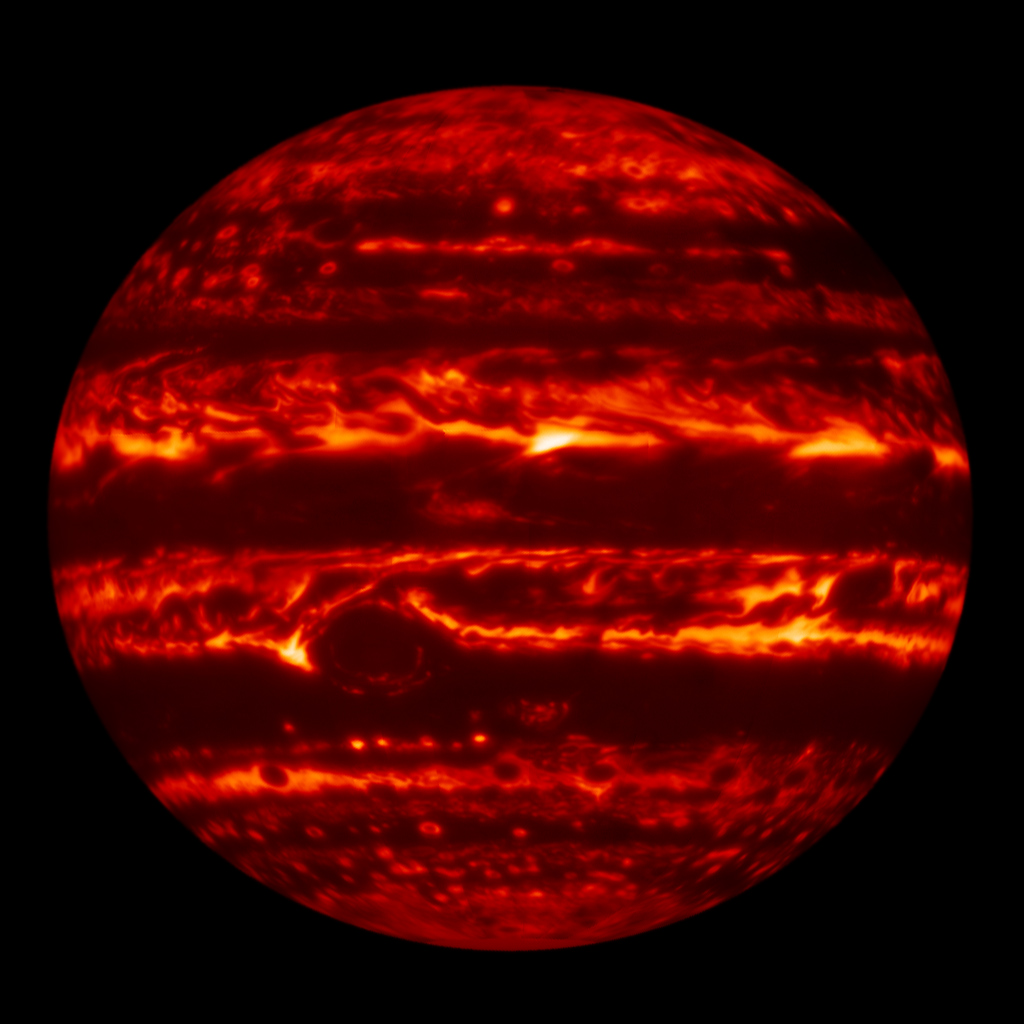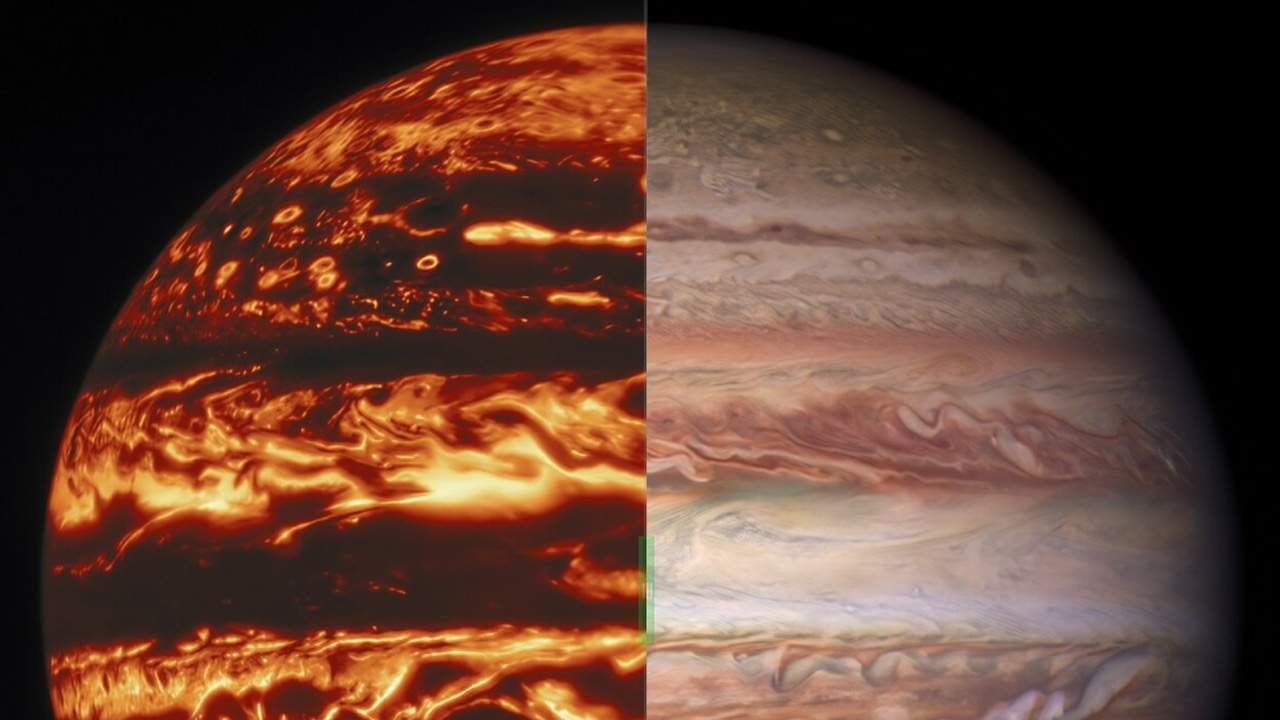The Hubble Space Telescope of NASA was able to capture various photo versions of Jupiter atmosphere using different colours of light. Some people find one of these captured images frightening because it appears to be hell.
Though named after the Roman riff on Zeus, Jupiter appears to be a happy home for Hades in an infrared image captured by Mauna Kea’s Gemini Observatory’s Gemini North telescope.
Meanwhile, the Hubble Space Telescope captured a beautiful ultraviolet image of the planet. These contrasting images serve as a reminder that when it comes to objects in space, the visible spectrum only tells half of the story.
The three images, taken in January 2017, show Jupiter in three different lights: infrared, visible, and ultraviolet. They highlight atmospheric details of our solar system’s largest planet, providing insights into the formation of lightning storms and revealing gaps that allow researchers to peer deeper into the planet’s gaseous recesses.
Pockmarks can be seen in the planet’s iconic Great Red Spot and are a bit of a mystery—they could be gaseous eddies, as described in a recent NOIRLab post.
The visible light image, a milky swirl of whites, peachy oranges, and matte reddish ringlets, is undoubtedly familiar. This view depicts more mundane areas of interest, such as the planet’s superstorms and hot spots, in vivid color thanks to the unique chemical cocktail that composes the planet’s outer atmosphere.

Jupiter – Infrared Image
However, in the infrared image, the Great Red Spot turns into a black blot, white clouds turn dark, and its normally deep-red gas layers turn into bands of fire. The final image was captured in the ultraviolet spectrum and resembles a dazzling cotton candy orb that you might see painted on the wall of a laser tag arena.
Seeing the planet’s different cloud layers in finer resolution is useful for planetary scientists, and it’s a visual feast for the casual observer.
This artist’s conceptual drawing, which was released on June 13, 2002, depicts a Jupiter-mass planet orbiting the star 55 Cancri, which is approximately 41 light years away from Earth.
A possible moon orbiting the planet is depicted because such moons are thought to be common in this type of system, but no moon has been discovered.










































